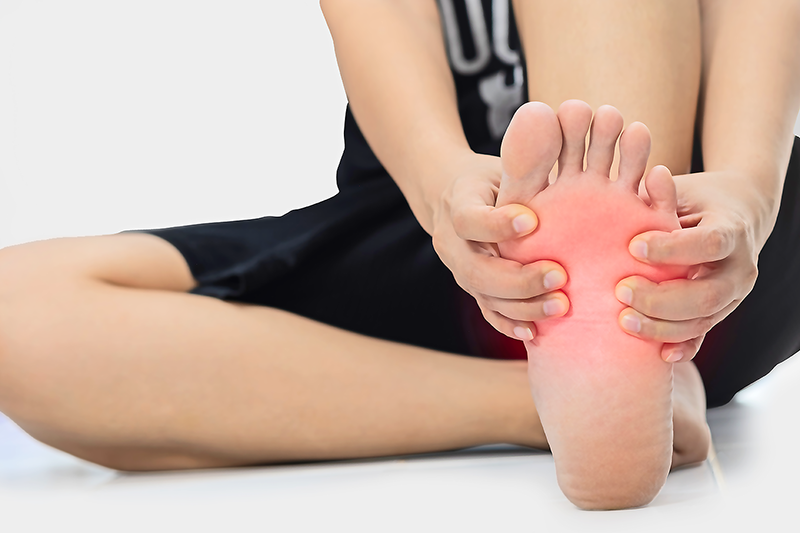Why Do My Feet Hurt?
Did you know that one of the most common reasons for foot pain is shoes?! Your feet get you from one place to another. They are the foundation for your body. And most of us are on them all day long. Therefore, it’s no wonder so many people have foot pain!
Foot pain is common and can be caused by several factors and in different areas. These areas include nerves, muscles, bones, ligaments, and more. So, what could be the reason for your foot pain?
Common Reasons for Foot Pain
There are many different common reasons for foot pain, such as:
Shoes:
It’s common for high-heels to be the culprit. They increase pressure on the balls of your feet. Therefore, causing the padding on your feet to thin.
Are you on your feet a lot? Then, avoid heels higher than 2 ¼ inches. Flip flops and pointed shoes also cause discomfort. So, match your shoes to your activity to reduce problems. Above all, wear supportive shoes that fit properly.
Also see, Could Your Shoe Choice Be the Reason for Foot Pain?
Arthritis:
There are hundreds of types of arthritis. Osteoarthritis, however, is the most common to affect feet. It is caused by aging cartilage in your joints. Over time, bones can rub together, causing pain. Gout is another painful arthritis condition that occurs in your big toe. This type causes a build-up of uric acid crystals. Then, autoimmune disorders can mistakenly attack your joints and cause inflammation. Lupus and rheumatoid arthritis, to name a few, are also common in the feet.
Bunions:
Also known as a hallux valgus, bunions are painful, bony lumps. They grow where your big toe meets your foot. Bunions are said to run in families. However, tight shoes and high heels will make them worse. The pushing of the big toe inwards causes them to form. If you’re living with a bunion, you need spacious shoes to reduce pain. Ice packs and special foot pads can also help. Sometimes, in severe cases, surgery may be required.
Bursitis:
Small fluid-filled sacs that cushion joints are called bursae. They can become inflamed under repeated friction from shoes. Bursitis mostly occurs at the heels and toes. Common symptoms of bursitis are pain, redness, and swelling. To relieve the symptoms of bursitis, ice, padding, and pain medications help to reduce swelling and aid in discomfort. Corticosteroid injections, however, are often prescribed for more serious cases.
Plantar Fasciitis:
This condition affects the ligament that connects to the front and back of your foot. This ligament provides support to your arch. When this gets swollen and inflamed, plantar fasciitis occurs. And having tight calves and high arches increases the risk of plantar fasciitis. However, repeated impact, such as running, can also cause inflammation and pain.
Stress Fracture:
Running and other highly active sports cause stress fractures by repeatedly pounding the feet and causing cracking in the long bones below your toes, called metatarsals. Then when your feet become swollen, the pain increases with the activity that caused it. Therefore, it’s important to allow time to heal. Rest your feet for 6-8 weeks to prevent more permanent damage.
Also see, Understanding Stress Fractures
Morton’s Neuroma:
Does it feel like you are always walking on a rock? Morton’s neuroma could be the culprit. This condition develops as a result of nerve tissue thickening. Any of your toes can be affected, but between the third and fourth toe is more common. Women are more at risk because they wear tapered and high-heeled shoes. RICE treatment and pain medications will help. If not, you may need surgery.
Plantar Warts:
Growths that develop on weight-bearing parts of your feet are called plantar warts. However, on the heels and balls of your feet are most common. The HPV (human papillomavirus) is the cause. It often enters your skin through a cut. Your skin in the affected area will be thick and tender. Plantar warts go away on their own. However, if they linger, try over-the-counter treatments.
For a world-renowned foot surgeon in the South Florida area, call us at 888-409-8006.

